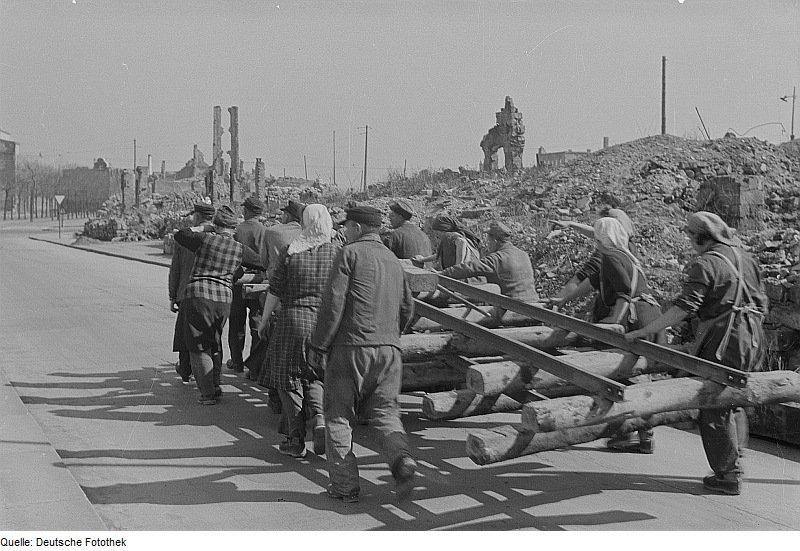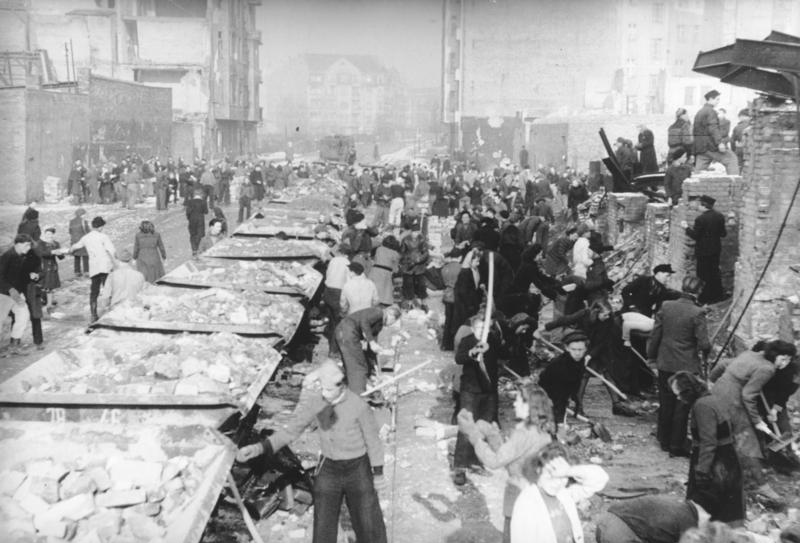The Rebuilding of Germany after World War 2
The Extensive Destruction across Germany
Germany was utterly devastated at the end of World War 2 due to extensive bombing campaigns by Allied forces and the fighting on German soil. The relentless bombing raids had destroyed the infrastructure of Germany including over 60% of the rail network, rendered airports unusable, dispersed industry out of bombing ranges, and left major shipping ports unusable with sunken ships. Almost every major city was over 80% destroyed, leaving ruins and rubble. Most of the working population was engaged in the military or imprisoned, leaving few resources to support reconstruction. Critical services like electricity, transportation, food production were crippled or non-existent. Germany was brought to its knees with the invasion by Allied forces from both the east and west.

Early Post-War Conditions and Challenges
The early post-war conditions in Germany presented tremendous challenges for survival, let alone reconstruction. Food shortages were acute with little ability to cultivate crops or sustain livestock. Diseases spread easily without access to medical facilities or clean water. Fuel shortages meant no heat during harsh winters. Military occupations divided the country, hindering coordination and distribution of resources. The [psychological devastation](https://store.fi.io.vn/collection/aispuro) of defeat and national guilt overwhelmed local populations. Rebuilding infrastructure without capital, skilled labor or imports seemed an impossible task. It would require a concerted international effort to avert a humanitarian crisis through famine and disease in the coming years.
Rapid Reconstruction in West Germany
Despite the immense destruction and difficulties, West Germany saw a remarkable rebuilding process in the first decade and a half after the war. This was enabled through the Marshall Plan which pumped billions in US dollars to reconstruct European economies. West Germany received over $1 billion which was utilized to systematically rebuild critical infrastructure. New housing rapidly replaced bombed out buildings. Industries were reconstituted through economic reforms and incentives. Cities saw functioning roads, railways and ports restored by the mid-1950s. Living standards steadily rose through expanding employment and social welfare programs. Most impressively, West Germany regained pre-war economic output by the late 1950s.
Rebuilding on the Back of an Export Powerhouse
A key driver of West Germany’s economic miracle was positioning itself as an export powerhouse. Critical industries like automobile, machinery and chemicals were rebuilt on modern principles of quality and efficiency. Brands like Volkswagen, BMW and Mercedes Benz rapidly gained global recognition for superior engineering and design. Strategic trade policies encouraged exports while importing raw materials. This allowed Germany to earn precious foreign exchange, overcome shortages and repay debts. Export led growth guided reconstruction, making Germany an export champion that remains a major player in global trade even today.
Overcoming Psychological Scars of Defeat
While rebuilding infrastructure was relatively quicker, overcoming the psychological impact of total defeat on the German populace was a longer process. The collective guilt and trauma and losing the war needed healing on a societal level. Promoting reconciliation with former enemies helped shift national identity from its fascist past. Focusing on economic betterment and individual prosperity under a new democratic system maintained domestic stability. Generations growing up without experiencing the war helped distance from those memories. Integrating with European institutions like the EEC/EU has firmly placed Germany as a responsible member of the broader community of nations.
A Divided Path for East and West Germany
In sharp contrast to West Germany’s success stood the condition in the Soviet occupied East Germany. The USSR extracted large reparations from the territory further hindering recovery. A communist political system isolated the populace and economic central planning stifled growth. Mass migration to the west depleted skilled manpower. Living standards lagged far behind the capitalist West through the Cold War era. Berlin was divided, becoming a symbolic epicenter of the East-West geopolitical tensions. German reunification only occurred in 1990 with the fall of the Berlin Wall, ending over four decades of division.
Enduring Lessons from Germany’s Rebuilding
Germany’s reconstruction provides insightful lessons even today. International cooperation through programs like the Marshall Plan can help devastated regions recover much faster. Export led growth based on quality and competitiveness is a prudent strategy. Overcoming psychological scars requires generational shifts and broader societal reconciliation. Geopolitics can have long term consequences by physically and politically dividing regions for extended periods. Most importantly, even utter destruction need not be an indefinite condition - with vision and concerted effort, remarkable rebuilding is possible within a relatively short timeframe.
The Human Factor - Rebuilding Lives and Livelihoods
While large scale infrastructure and industries formed the backbone of reconstruction, equal importance was rebuilding of individual lives and livelihoods. For the common people who endured immense suffering and loss, resettlement into stable homes and communities was vital. Jobs and income security allowed regaining dignity and normalcy. focused on skills training and education to employ the workforce productively. Social welfare stepped in for those incapable of supporting themselves. New opportunities arose with economic expansion, giving hope for the future. Most importantly, peace and stable democratic governance nurtured hope to move past the trauma of war.
A Continuing Story of Redemption and Renewal
In the decades since, Germany has emerged as Europe’s economic powerhouse and a responsible global stakeholder. What was a scene of utter ruin is today a landscape symbolic of human resilience and redemption. While the scars of history remain, reconciliation has healed old wounds. Younger generations born after the war carry little baggage of the past. Germany continues writing a story of renewal - rebuilding not just homes and cities, but the spirit of a nation. Its success stands as a reminder that no people or place need remain defined by even their darkest hours, if they choose the path of reconstruction with vision and unity of purpose.
